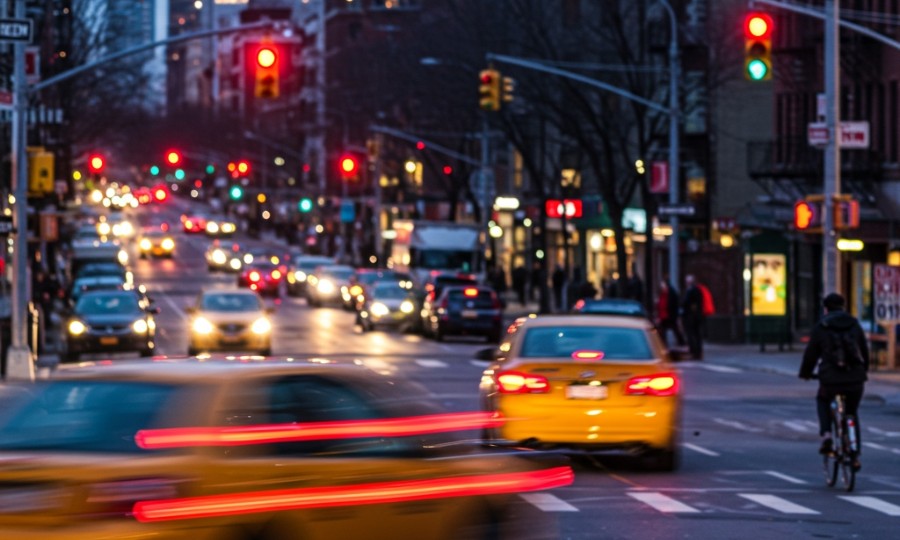
You’d think with all the focus on Vision Zero and ongoing efforts to make our streets safer, traffic fatalities would be steadily declining across New York City, right? We’re often told about the progress being made, and in many boroughs, that’s indeed the case. But here’s the thing: while much of the city celebrates a downtrend, Brooklyn is bucking that positive momentum in a concerning and tragic way. The borough, known for its vibrant communities and bustling avenues, has seen a rise in traffic-related deaths, sparking urgent questions about what’s driving this dangerous shift.
For those of us who live, work, or simply traverse Brooklyn’s dynamic landscape, this isn’t just a statistic; it’s a deeply felt concern. We’re talking about neighbors, friends, and family members impacted. So, what’s really going on in one of NYC’s busiest boroughs? It’s more complex than you might imagine, involving a mix of urban planning, driver behavior, and evolving street dynamics. Let’s dig into the factors contributing to Brooklyn’s rising traffic fatalities and explore what might be done to reverse this alarming trend.
Unpacking Brooklyn’s Unique Roadway Ecosystem
Brooklyn isn’t just any borough; it’s a mosaic of densely populated residential areas, thriving commercial districts, and major arterial roads. This unique blend creates a challenging environment for traffic safety. According to recent NYC Department of Transportation data, while citywide traffic fatalities have seen some fluctuations, Brooklyn’s numbers have stubbornly trended upwards in specific categories, particularly involving pedestrians and cyclists. This isn’t just bad luck; it points to systemic issues.
Think about the sheer volume of people and vehicles sharing the same space. You’ve got commuters heading to Manhattan, local businesses making deliveries, families driving to parks, and a booming population relying on various modes of transport. This high-density usage puts immense pressure on existing infrastructure. When you add in the mix of wide, multi-lane avenues designed for speed (like Flatbush Avenue or Atlantic Avenue) intersecting with narrower, residential streets, you create inherent conflict points. It’s a recipe for disaster if not managed carefully.
The city’s Vision Zero initiative, launched in 2014, set an ambitious goal to eliminate traffic deaths and serious injuries. While it’s led to significant safety improvements like speed cameras, redesigned intersections, and protected bike lanes across the city, its impact in some parts of Brooklyn seems less pronounced. Why aren’t these interventions yielding the same results everywhere? It’s a question that keeps traffic safety advocates, and frankly, all of us, up at night.
The Pervasive Problem of Speed and Distraction
While infrastructure plays a significant role, human behavior remains a critical factor in Brooklyn’s rising traffic fatalities. Speeding, for instance, is not just a minor infraction; it dramatically increases both the likelihood and the severity of crashes. A pedestrian hit by a car going 40 mph is eight times more likely to die than one hit at 20 mph. It’s a stark reality we’re facing on our streets.
Despite increased enforcement and the expansion of speed camera zones, a persistent culture of speeding, especially on those wider Brooklyn thoroughfares, continues to plague the borough. Drivers, in a rush or perhaps desensitized to urban hazards, often exceed posted limits. You might be thinking that enforcement alone won’t solve deeply ingrained habits, and you’d be right. It requires a multi-pronged approach.
Then there’s distracted driving. In our always-connected world, smartphones have become both a blessing and a curse. Texting, checking notifications, or even just glancing at a GPS can divert a driver’s attention for crucial seconds. Those few seconds, particularly in a dense urban environment like Brooklyn, can mean the difference between life and death. And let’s be honest, it’s not just drivers; distracted walking and cycling also contribute to the chaos, though vehicles undeniably pose the greatest threat.
Adding to this complexity is the growing prevalence of larger vehicles like SUVs and light trucks. These vehicles, often heavier and with larger blind spots, can inflict more severe damage in a collision compared to smaller cars. When a distracted or speeding driver is behind the wheel of a larger vehicle, the potential for catastrophic outcomes escalates significantly.
Reckless Driving, Emerging Mobility, and Enforcement Gaps
Beyond speeding and distraction, we’re seeing an increase in genuinely reckless driving behaviors. Running red lights, improper turns, and aggressive maneuvers are not uncommon sights. This isn’t just anecdotal; police reports and community complaints frequently highlight these dangerous patterns. It creates an environment where even the most cautious pedestrian or cyclist feels constantly on edge. What can we do when a few bad actors put so many at risk?
The rise of new mobility options also presents a unique challenge. E-bikes, e-scooters, and other micro-mobility devices have exploded in popularity, offering convenient ways to navigate the borough. However, their integration into existing traffic patterns isn’t always smooth. Issues around speed limits, proper lane usage, and rider education are still being ironed out, leading to new types of collisions and near-misses. It’s a learning curve for everyone, and unfortunately, some lessons are learned the hard way.
Enforcement efforts, while vital, also face limitations. Police resources are stretched, and while automated cameras help, they can’t catch every infraction. Community groups often advocate for increased police presence in high-crash corridors, but balancing enforcement with community relations is a delicate act. It’s not just about issuing tickets; it’s about fostering a culture of safety and accountability among all road users.
A Path Forward: Collective Action for Safer Brooklyn Streets
Addressing Brooklyn’s rising traffic fatalities isn’t a simple fix; it requires a concerted, multifaceted effort from city officials, urban planners, law enforcement, and crucially, every single resident. We know this can feel overwhelming, especially when you’re just trying to get around safely. But ignoring the problem isn’t an option.
First, we need continued investment in proven street safety improvements. This means more protected bike lanes, pedestrian refuge islands, safer intersection designs, and traffic calming measures (like speed bumps or narrower lanes) in high-risk areas. Expanding the reach and hours of automated enforcement, such as speed cameras, is also critical. Second, targeted education campaigns are essential to shift driver, cyclist, and pedestrian behavior. These campaigns should emphasize the dangers of speeding, distracted driving, and the importance of looking out for vulnerable road users. I believe that by understanding these interwoven factors, we can push for more effective solutions.
Finally, community engagement is paramount. Residents are often the first to identify dangerous intersections or persistent reckless behavior in their neighborhoods. Empowering community boards and local advocacy groups to work directly with the DOT and NYPD can lead to more responsive and effective interventions. What can you do? Stay informed, advocate for safer streets in your community, and most importantly, practice safe road habits yourself, whether you’re behind the wheel, on a bike, or on foot. Together, we can reverse this dangerous trend and make Brooklyn’s streets safer for everyone.
Free Case Consultation
Injured in an accident? Contact Rosenberg, Minc, Falkoff & Wolff for a free and confidential case review with an experienced NYC personal injury attorney.


